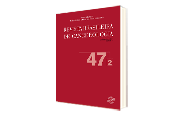Antineoplastic Drugs Extravasation: Notification and Delivered Care
DOI:
https://doi.org/10.32635/2176-9745.RBC.2001v47n2.2322Keywords:
Oncologic Nursing, Outcome and Process Assessment, Employee Performance AppraisalAbstract
The present study, developed in the Adult Chemotherapy Outpatient Clinic of a teaching hospital located in the city of São Paulo, Brazil, was intended to: identify the incidence of cytostatic drug extravasation in patients assisted at this clinic between 1998 and 1999; verify the signs and symptoms presented by those patients following drug extravasation; and, analyse the type of care provided by the nursing personnel regarding the treatment of this adverse event. The study, a retrospective and descriptive investigation, used as the primary data source the records on those adverse events observed in the years of 1998/1999. It was concluded that during that time, the extravasation incidence was of 1.2% and 1.0% respectively, thus showing much lower proportions when compared to the maximum limits observed in the related literature. From the 82 patients affected by extravasation, 42 (51.2%) presented some signs and symptoms, the major ones being ardor (stinging), pain, and edema (swelling). As an undesirable effect one of the patients presented forearm scabes five days after vinblastin extravasation and had to be submitted to specialized treatment. The indication and application of hot dressings over the extravasation site were adequate to the type of infused drugs; among the 58 patients who were applied with cold dressings, two (3.4%) should have been treated with the hot ones. Those observations led to a careful review of the type of care to be provided and emphasized the need to improve the data recording method in order to support the evaluative process within this helath care facility.









